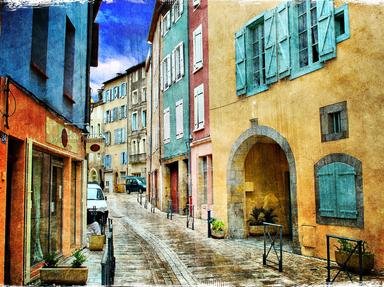Quiz Answer Key and Fun Facts
1. William Hazlitt, a noted critic of literature and art, toured Europe in the 1820s. Visiting Rome, of which work of art did he say: "It is like an immense field of battle or charnel-house ... or it is a shambles of art. You have huge limbs apparently torn from their bodies ... , anatomical dissections, backs and diaphragms, ... neither intelligible groups nor perspective nor colour. ... The whole is a scene of enormous, ghastly confusion, in which you can make out only quantity and number, and vast uncouth masses of bone and muscle" ?
2. "What a red rag is to a bull, Turner's 'Slave Ship' is to me. ... A Boston critic said the 'Slave Ship' reminded him of a cat having a fit in a platter of tomatoes. That went home to my non-cultivation, and I thought, here is a man with an unobstructed eye." Which American writer is criticizing Turner here?
3. Charles Dickens was a regular visitor to art exhibitions. At the Royal Academy in 1850 he saw a painting of a domestic scene by John Millais. He described the kneeling female figure in the centre foreground as "so horrible in her ugliness that (supposing it were possible for any human creature to exist for a moment with that dislocated throat) she would stand out from the rest of the company as a monster in the vilest cabaret in France or the lowest gin-shop in England." Who is this woman?
4. "I have seen and heard much of cockney impudence before now, but never expected to hear a coxcomb ask two hundred guineas for flinging a pot of paint in the public's face". Whose "Falling Rocket, or Nocturne in Black and Gold" was criticized in these terms by John Ruskin?
5. In 1961 the Royal Academy staged an exhibition of the work of a man who is said to have been Queen Victoria's favourite painter. The critic Geoffrey Grigson thought that "it would be hard to find a nastier painting than the one the exhibition begins with - 'Young Roebuck and Rough Hounds.' The head of the shot animal lolls down. A hound with a sob-look or love-look in its soft eyes licks the bleeding wound in the neck as if it were licking the hand of the Prince Consort." Grigson also lambasted a painting of two dogs called "Dignity and Impudence". Who was the painter of these works?
6. In 1910 Roger Fry mounted the first major exhibition in Britain of post-Impressionist art, and met with fierce criticism. Robert Ross said of the work of one artist: "(He) is the typical ... degenerate of the modern sociologist. 'Jeune Fille au Bleuet' and 'Cornfield with Blackbirds' are the visualized ravings of an adult maniac. If that is art, it must be ostracized, as the poets were banished from Plato's republic." Which artist was referred to?
7. In Hyde Park, London, stands a memorial to the author and naturalist W H Hudson. Its centrepiece is a relief called "Rima". When it was unveiled in 1925, the author John Galsworthy wrote to a friend: "It's nothing but a piece of unrealized affectation. I confess it makes me feel physically a little sick. The wretched woman has two sets of breasts and a hip joint like a merrythought. No, really!" Who was the sculptor of "Rima"?
8. "I don't know what art is, but I do know what it isn't," said Brian Sewell in a newspaper interview in 1999. " And it isn't someone ... embroidering the names of everyone they have slept with on the inside of a tent." Which artist's work was Sewell referring to?
9. In the 1970s the Tate Gallery in London attracted controversy when it acquired a work called "Equivalent VIII", by Carl Andre, for £6,000. What did the work consist of?
10. According to many critics, the limited ability of painters is matched by the limited taste of their patrons. Can you complete the following observation about Queen Elizabeth I of England by Horace Walpole: "There is no evidence that Elizabeth had much taste for painting, but she loved ------------------"?
Source: Author
TabbyTom
This quiz was reviewed by FunTrivia editor
gtho4 before going online.
Any errors found in FunTrivia content are routinely corrected through our feedback system.
